The Eternal Quest for Something Useless
NYC's Diamond District in the aftermath of sanctions.
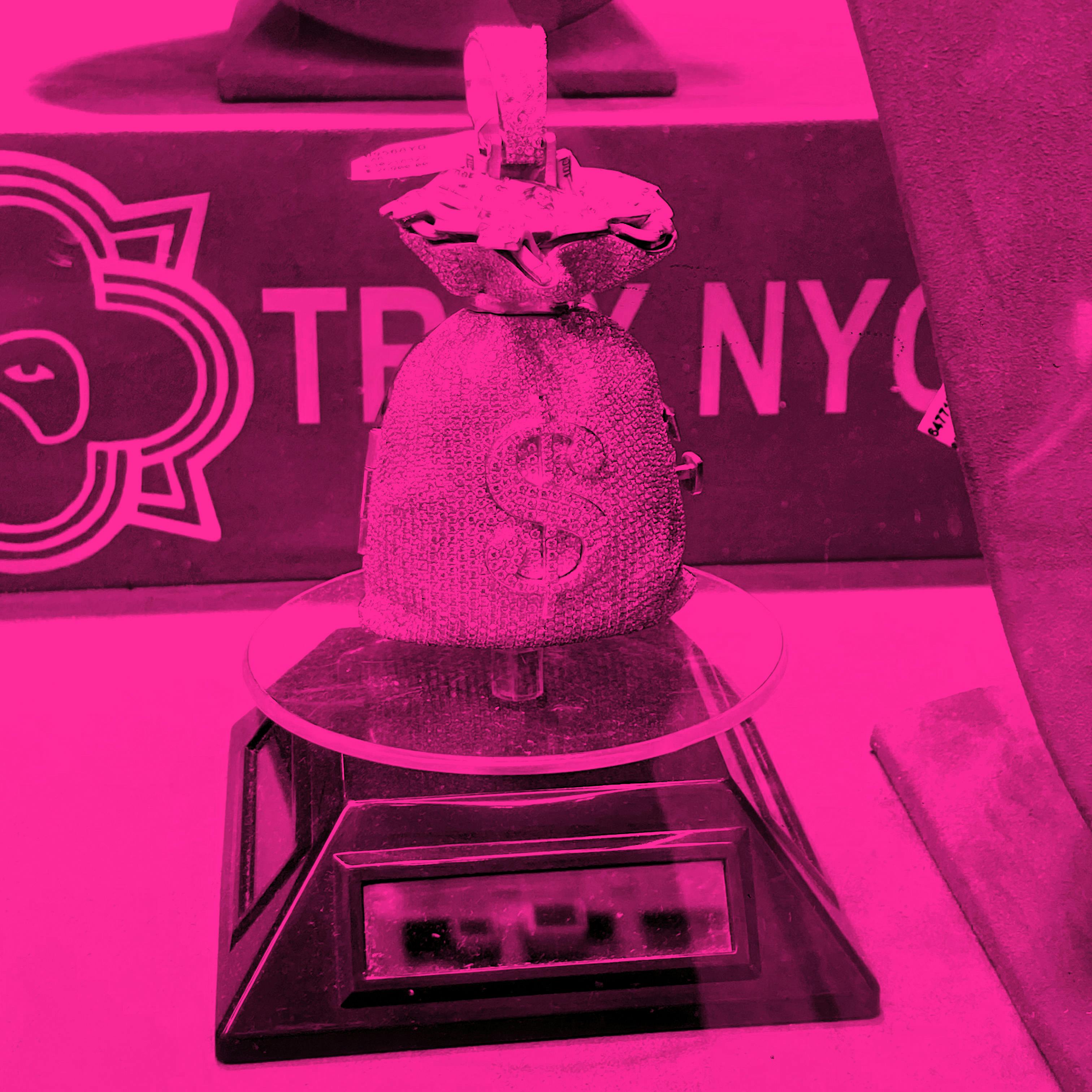
April 3rd, 2025. 9AM. The first Wall Street opening unfolds after Trump’s tariffs announcement the previous day. This might be the conclusion of a historical era – which began post-WWII, and evolved with the fall of the Berlin Wall and China becoming a member of the World Trade Organization. The world has changed, but it’s not the end yet.
The notorious Charging Bull is surrounded by two types of tourists. At the level of the statue’s bronze head, a Japanese crowd takes selfies with its horns; lower down, near the testicles, you’ll find mostly Italians, groping them like farmers with ripe apples. That’s all I retain from that morning, apart from the incessant flow of postmodern-faced brokers coming and going from NYSE’s revolving doors. They wear Patagonia and Columbia vests in various shades of gunmetal gray, holding take-away matcha teas in their left hand. They appear peaceful and bionic – as if the performative part of their profession is its only surviving speck, since finance embraced the micro-molecular pace of high-frequency trading.
Their likeness strikes me, as does the enormous Lion of San Mark on a flag waving next to Wall Street’s Trump Building: Cipriani’s. You may have taken a few long flights, but you will always be the kid who attended school in Mestre’s suburbs. On my way to Midtown, I wonder what legacy this urgency will leave behind – these brief chapters of contemporary history unfolding hour after hour in television broadcasts and endless bulletins. Hardly any. I can only find partial answers one month after the sanctions were first announced, and evidence seems to back up my impressions. Most tariffs have vanished, the president’s credibility is in freefall, and people are talking about the Conclave: I’m left with the impression of a country that, while stumbling, hit the Earth’s axis like asteroids do in movies.

© Nicolò Porcelluzzi
Luxury in the Age of Tariffs
Discussing the transformation of luxury without mentioning Donald Trump wouldn’t be very professional now, would it? Like 8 years ago, articles multiply in lifestyle magazines, analyzing Trumpian interiors’ tackiness in detail — especially that of the Oval Office. Journalists are busy proving how strikingly similar the office golden sconces are to the polyurethane decorations on Alibaba. Style-wise, the White House is turning into one of those Arab petrodollar palaces. Remember Ramzan Kadyrov's presidential palace, where journalist Anna Politkovskaya saw price tags still attached to furniture, mirrors, lamps, and carpets? There isn’t much to say: Gold shines, everyone wants some, and its value keeps increasing. Trump employs it massively, like a child who just discovered balsamic vinegar and drenches his salad with it.
I was able to appreciate Trump Tower’s Fifth Avenue interiors while strolling through the building’s first floors, which are open to the public. Only one traffic light away, Louis Vuitton’s headquarters soar — a windowless building consisting of a massive replica of the brand’s suitcase, decorated with the signature floral pattern. Well, that view and other omens I've collected — Trump-style interiors included – seem to confirm Sean Monahan’s Boom Boom theories.
Monahan, the LA-based trend-forecaster and journalist who, ten years ago, invented the term ‘normcore’ — a fashion style based on hoodies, sweatpants and casual, ‘normal’ clothes – has come back for another round and has recently coined the expression ‘boom boom’: the flashy, kitsch aesthetic of showing off conspicuous consumption. Gold-pleated interiors, shoulder-padded blazers, expensive hairstyles, animalier, fur coats, and so on. Something that, until now, was commonly known as… the Eighties.
The success of these labels (e.g. ‘brat summer’) reflects contemporary culture’s hyper-fragmented landscape, as well as a universe of pre-packed trends that, unsurprisingly, fashion and lifestyle brands wrap up to boost their sales a bit. Some might say the Eighties are trendy again. To the world’s most powerful man, however, they simply never ceased to be.
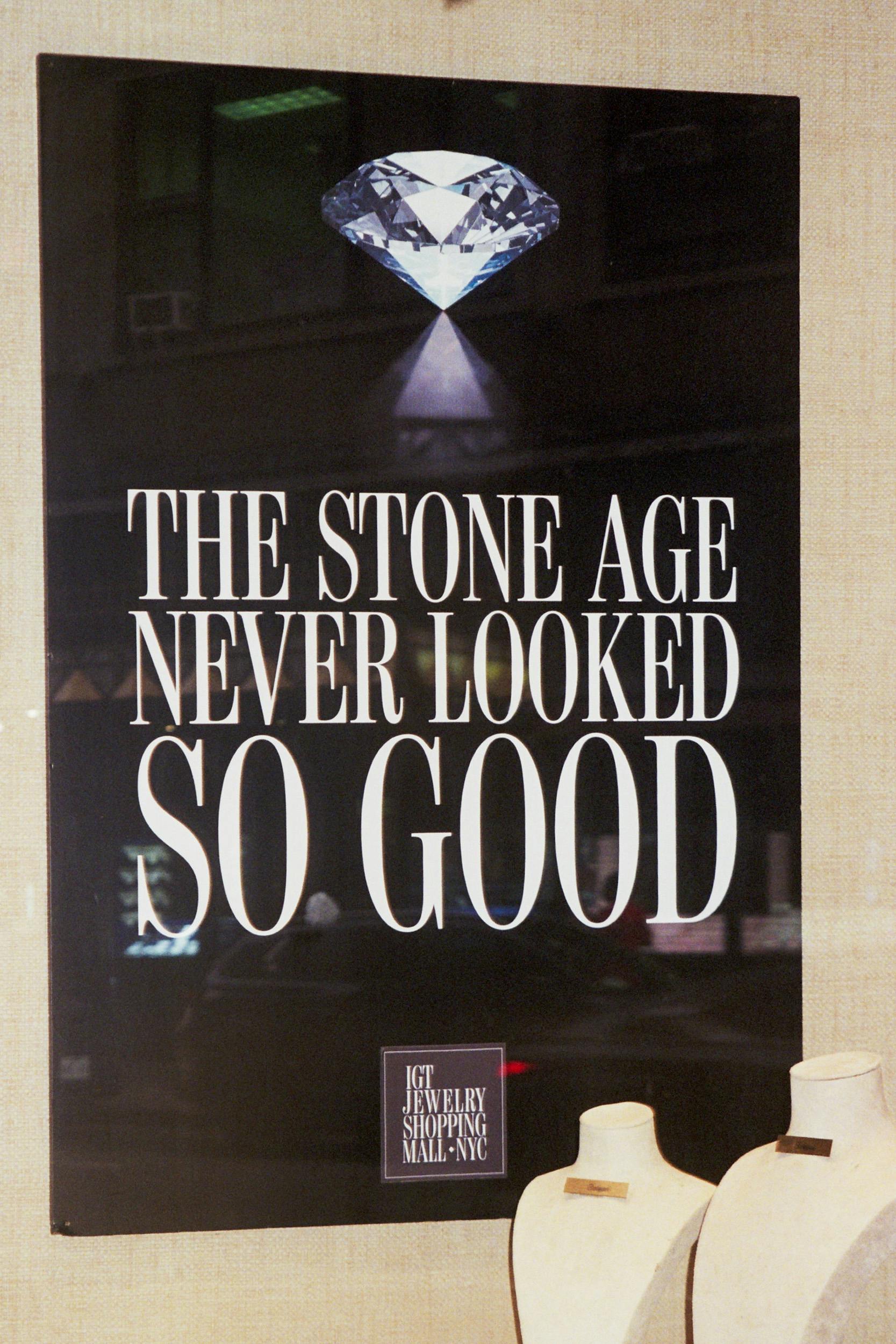
© Nicolò Porcelluzzi
Diamond District
A few blocks away from Trump Tower, the Diamond District remained loyal to that period — though especially to its greedy facets. The District consists of two parallel streets — 47th and 48th — closed by Fifth and Sixth Avenues. Crossing the area takes five to ten minutes. This tiny network of roads trades 90% of the diamonds entering the U.S. The District’s transactions amount to approximately $ 400 million daily, reaching up to $ 24 billion annually.
It comprises between 2,600 and 4,000 enterprises, mostly located in the 20 jewelry exchanges. Similar to immense government offices, the Exchanges are dotted with tiny, uniform stores and workshops. The displays appear very similar to one another, the staff indistinguishable. Unlike tourists, who are easy to spot, DD’s regulars are mostly industry professionals.
Outfits include sweated shirts with rolled-up-sleeves, big stomachs squeezed into the striped texture, greased hairstyles. Almost everyone is multi-generational Diaspora Jews, Ashkenazis, Buccaras, Chassidim, and so on. Saleswomen aren’t uncommon, their abyssal stares capable of revealing exactly who you are: In my case, an unemployed writer. They reign over storefronts wearing high heels, sporting elegant suits and precious details. But someone else here steals the show: the others, the owners, hunched over lenses and polishing machines, busy chatting in the mame-loshn typical of diamantaires.
Inspired by their stage presence, film directors and brothers Josh and Benny Safdie — who are also the children of a former District handyman — cast Adam Sandler to play an Ashkenazi jeweler from the District named Howard Ratner in Uncut Gems, their last movie together. Ratner is a histrionic personality with a gambling problem, roaming the District and infecting it with his debts, IOUs, and empty promises. Yet, be it for his obscure charisma or the magical quality of the opal he had promised Kevin Garnett, he always finds a way out of trouble. Sort of.
The center of Howard’s obsession, mine, and Roger Caillois’ — who wrote about stones in the 60s — is “....the intense and prolonged contemplation of a stone, miniature world, where the soul, dazzled, penetrates, to savour elated joy.” Uncut Gems revolves around a large Ethiopian opal still embedded in its matrix rock.
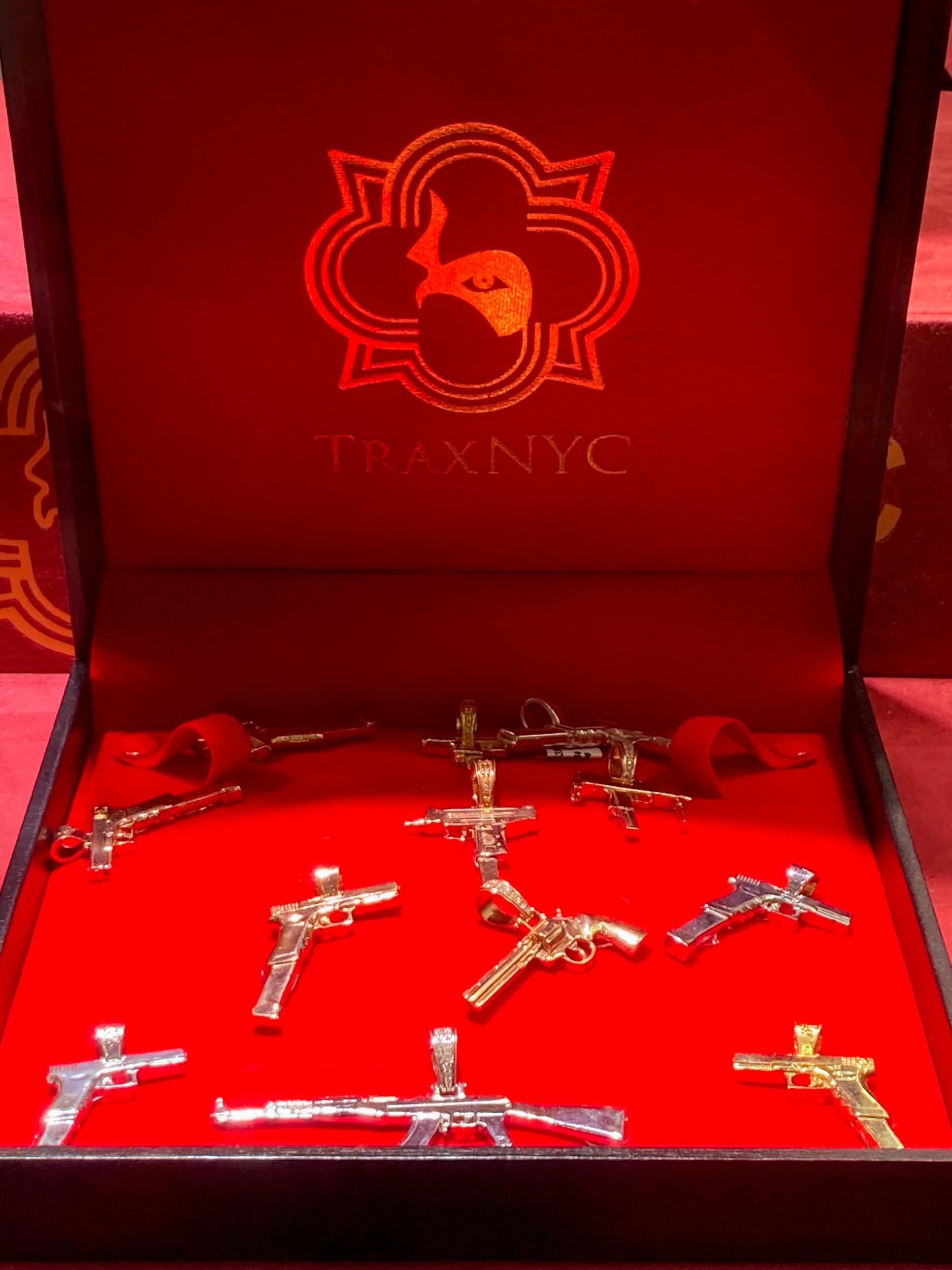
© Nicolò Porcelluzzi
Uncut Gems and the Spirit of Time
In the movie, Howard claims, “You can see the whole universe in opals, that's how fuckin' old they are," — yet, I found no trace of them in the District. In the 47th, it’s mostly diamonds and watches. Millions of dollars flow, but the coffee shops inside the dealers’ offices remind me of the ones near bus stations – emanating the same electric-stove aroma you’d smell while waiting at the QT8 bus stop at dawn, in the outskirts of Milan.
At first glance, the stores look all the same: Horseshoe-shaped aisles with dozens of stores in a row, two to three meters wide each. On display, row after row of gold and diamond watches and shining pendants, radiating the same perfect, toxic glare.
But the eye must be trained, and storefronts try to distinguish themselves: some are breathtaking, displaying pyramids of rings with rubies, sapphires, and emeralds as if plucked out of a Mesopotamian fairy tale. Others shield diamond brooches of all shapes behind bulletproof glass: cornucopias, koalas, crucifixes, strawberries, dolls, and even the Bhutanese flag. Diamond pendants shaped like handguns are popular, as are Jesus Christ’s faces and fashion brands’ monograms. White-and-yellow gold rings, with one or multiple diamonds in the bezel. Bulgari snakes, jade stones, rose gold, and God knows what else.
One store only has Cartier rimless eyewear on display. The lenses span the entire color spectrum, with a curious preference for pink and purple: perhaps the two shades no one wanted. These are the Cartiers that Howard Ratner wears in Uncut Gems, the same I saw on Karim Benzema when he received the Ballon d’Or, and on Matteo Messina Denaro the day he was arrested. Later, those rimless glasses trickled down onto the whole Italian rap scene, too, followed by an incremental decline of coolness.
The glasses are piled up in the showcase, like basic plastic eyewear sold next to coconut necklaces and Brazilian bracelets on the beach. I try to calculate their worth mentally, concluding that this half-metre area contains the equivalent of around $100,000. I ask the Cartier guy, who is also wearing a pair, if he thinks that Uncut Gems played a role in the model’s popularity. He says he hasn't seen it and, anyway, no.
He’s right. In the District, a few words are enough to have a whole conversation, a mere ‘mouth opening’. But talking isn’t exactly a preferred activity here. As a visitor, the number of questions you can ask is limited, and directly proportional to the chances of being beaten in a corner between 47th Street and Sixth Avenue. Yet, here I am, with no money whatsoever. I can only try, throw myself in, and improvise poorly.

© Nicolò Porcelluzzi
The Elusive Champion
I start exploring Fifth Avenue the following day, where a sign reading Avianne & Co. stands out. Its storefront is different from the others, independent and separate. Paved in white marble, and lit by the usual halogen spotlights you see everywhere else, but bigger and brighter. The family who runs Avianne, the Aranbayev, is among those who helped – in the beginning reluctantly, then resigned – the Safdie Brothers decoding this enclosed world, normally shrouded in secrecy.
It’s 10 AM, and a light rain is drizzling. The store seems to be deserted. A security guard leans against the counter, scrolling through Youtube videos. Not far stands a young man in white, with a necklace weighing a pound at least. He’s wearing Cartier glasses, but with the rim and brownish lenses. He seems interested in the store’s selection.
I ask him if he’s watched the movie. “Yo, he was in the movie,” the bodyguard says, laughing. The guy in white introduces himself as the owner’s son, Jonny Aranbayev. In Uncut Gems, he played Eddie, Adam Sandler’s firstborn.
He’s an extremely kind person and offers to be interviewed. It’s the beginning of a conversation like those you may have with football players, models, company executives, or famous chefs: their talent isn’t proportional to their abilities to explain it. They perform spectacular overhead kicks and don’t know how. They invest in EST ESG and don’t know why. They effortlessly flip scallops in their pans. 21-year-old Jonny Aranbayev sells half-million- dollar watches with equal idleness. “I was on the block, and there were ladies going around. I was working casually in my father's store at the time. I walked in on some hot shit. I’m 12, 13 years old, roaming around in such a luxurious place. And I own the place, you know? They were interested. They were like, who is this kid? I introduced myself. My father is one of the owners here. My name is Jonny. I’m a salesman here. They liked me. They liked my character.”
Who did the ladies like more, Jonny or his character? Are these even two separate identities? One of the ladies was likely Jennifer Venditti, casting director of Uncut Gems and many more productions, including Euphoria. Venditti is gifted – her job proves an unexpressed everyday life rule: that you can see the whole universe in faces. “At first, I thought it was very weird. I was skeptical. They start talking about an audition for a movie, ‘I like your son,’ and so on. ‘We want to invite him for an audition.’ Then I'm starting to realize, maybe this is real. Then I'm like, you know what? Let's take it seriously. It was like a thousand kids. I waited for my turn, I went in, and I did a good job.”
“They asked me. They were just asking me normal questions for a kid. ‘If you were in school, you had a test and you got caught cheating, how would you maneuver? What would you do?’ You know what I said? My shoes are untied, right? My mom told me if my shoes untied, it's a fire hazard. So I’m just tying my shoe, you understand? They liked that. That's some smart ass shit. That's what got me the role, honestly. That, and a lot more.”
A lot more. His father offered valuable advice to the troupe, including Adam Sandler. In fact, many jewelry pieces featured in Sandler and Julia Fox’s storefront belonged to the Aranbayev. I ask Jonny about his best deal. “I've been in the industry for five years, you know. I sell these [watches] consistently. It's not easy selling them. [My best deal] was a Skeleton AP Rose Gold. I'll be honest with you, I sold it for about $180,000.” Jonny doesn’t have any complicated theories about luxury to disclose, because luxury is the air he breathes. If anyone asked me to give a detailed description of the gas exchange happening in our lungs every second, I would reply like young Aranbayev did: “You learn, you live. That’s all I can say.”
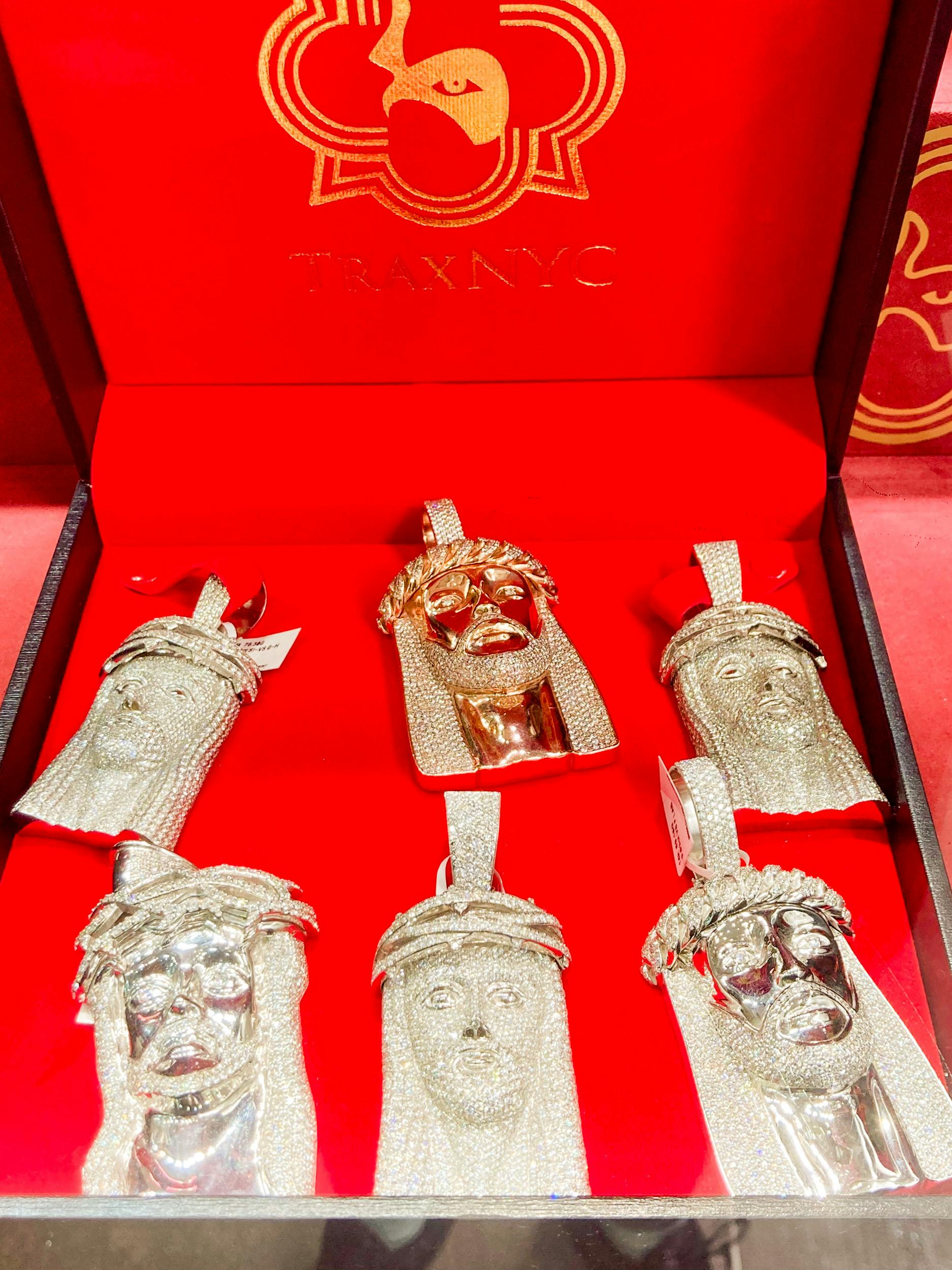
© Nicolò Porcelluzzi
Daytona vs. Charizard
Early last spring, a friend sent me a video of a thousands-euro barter. A young man offered a Pokémon card to another guy holding a Daytona in his hands. The guy, named Riccardo Cappagli, exchanged his Rolex for a Charizard 1st edition mint, graded 9.5 by BGS: A very rare card.
The internet has flipped the world upside down like a snow globe, like a Dickensian world where the run for profit overturns centuries-old hierarchies, Henry James-style. We’re witnessing new social conflicts unfolding in old capitalism’s nerve centres — Asian megacities’ ports, Free-trade zones, New York, San Francisco, Guangdong. It’s old money vs. new money.
Pokémon cards are auctioned off at Sotheby’s. On September 24, 2025, the auction house put up for sale a promotional specimen named 1998 Pokémon Japanese Promo Illustrator Holo CoroCoro Comics Pikachu, — a Pikachu card autographed by Takumi Akabane, the franchise co-founder.
The trade was complemented by a detailed description and history of the card, portrayed with words that might have been well spent for a Hermès or Andreas Gursky piece. A few excerpts are worth repeating: “No Pokémon card matches the Illustrator Pikachu's combination of popularity, rarity, and mythical status. […] It has maintained this lofty standing for decades and will most likely continue to do so as long as collectors continue their quest to catch 'em all. […] Though Pokémon has undergone many adaptations and evolutions, Pikachu appears poised to be a force in global media for decades to come.”
Anyone who invested half a million dollars in Pikachu might need a little reassurance. The ultra-rich arena is welcoming a new – very restricted, sure – crowd, armed with new forms of cultural capital and some technical and informational advantages. They were children in the 1990s, they made money with IT and cryptocurrencies, and they love Pokémon. New money fuelling new luxury – yet another consequence of the total cultural fragmentation I mentioned above.
Collectable cards, a pair of Air Jordans, or an old video game’s ROM cartridge can be safe haven assets too, as much as beachfront properties and classic cars. Meanwhile, the notions of ‘hypebeast’ and ‘capsule collection’ have secured a permanent space among the pages of Bloomberg, Forbes, and The Economist.
In a changing world, the Diamond District is readjusting. The old-fashioned clientele can still find the same old colliers, rose gold Audermars Piguets, and ‘blood diamonds’ that will last forever; but for the nouveaux riches, golden superheroes, glittering Gengar necklaces, and more diamond Pokémon characters are cast– just like the diamond-encrusted Furby that Sandler sported in Uncut Gems.
But what’s more old money than gems and diamonds? Would the passions of a new, deranged ruling class be able to replace the eternal appeal of precious stones and metals?
Not far from the District’s white spotlights, half an hour's walk from blooming pear trees and diamond showcases, you’ll find shelter in the large, light-bathed halls of the Metropolitan Museum. One of its hundreds of rooms displays a few examples of Macedonian jewelry dating back to 400 B.C., such thoughtful masterpieces that they would bring tears to anyone's eyes. Among them, a tiara of golden myrtle leaves and golden acorns lies in absolute balance, bright as before Christ. I wonder how many times it has girded the head of someone who kept wanting something more, something different.
Born in Mestre, Venezia, in 1990, Nicolò Porcelluzzi is a writer, editor and podcast host and author. His last audio documentary, Sonar, delves into the fascinating world of animal communication. Since 2017 he co-authors the newsletter Medusa.
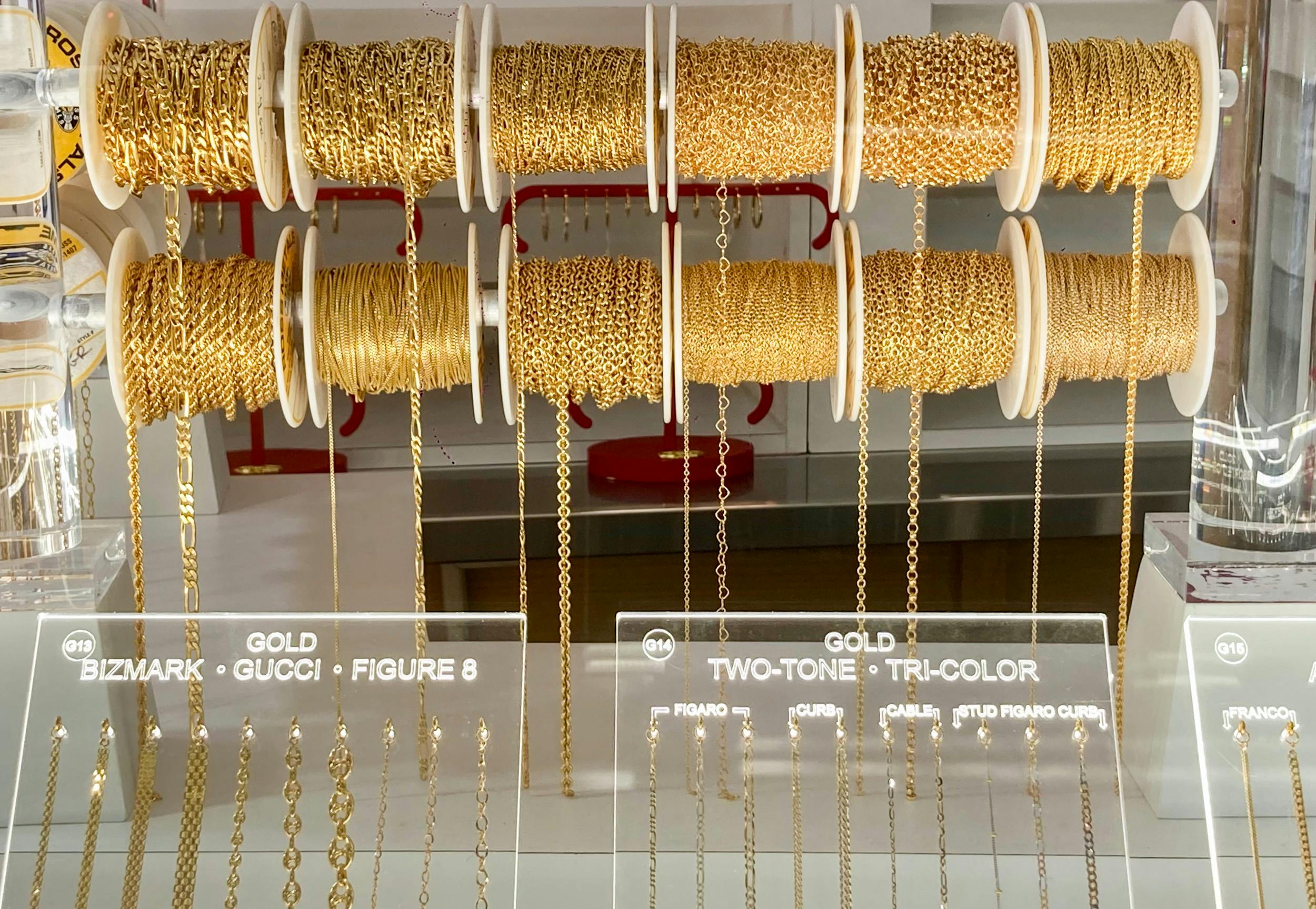
© Nicolò Porcelluzzi
Born in Mestre, Venezia, in 1990, Nicolò Porcelluzzi is a writer, editor and podcast host and author. His last audio documentary, Sonar, delves into the fascinating world of animal communication. Since 2017 he co-authors the newsletter Medusa.